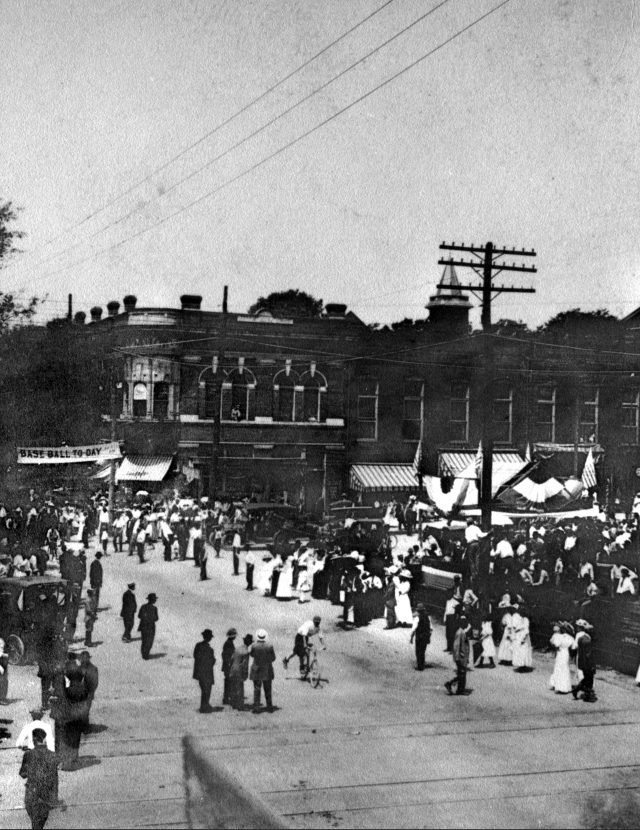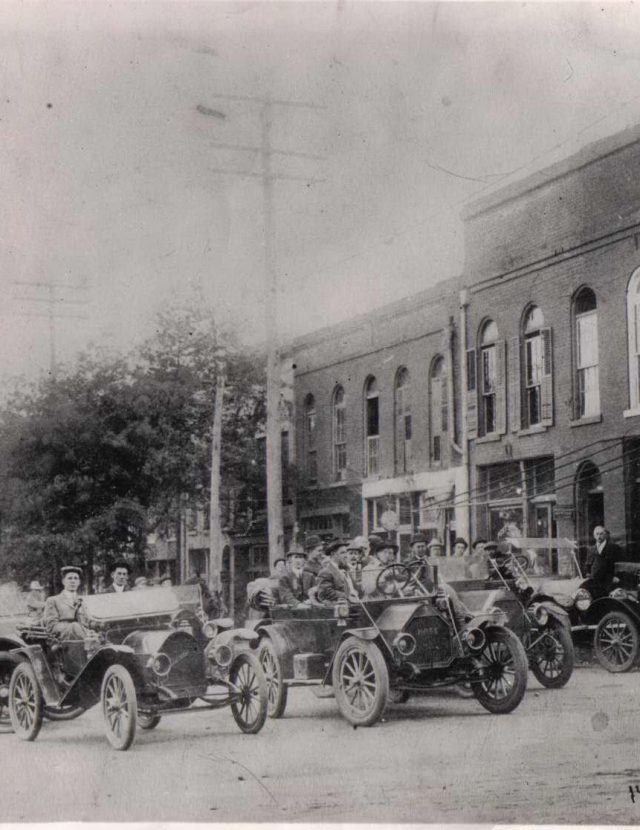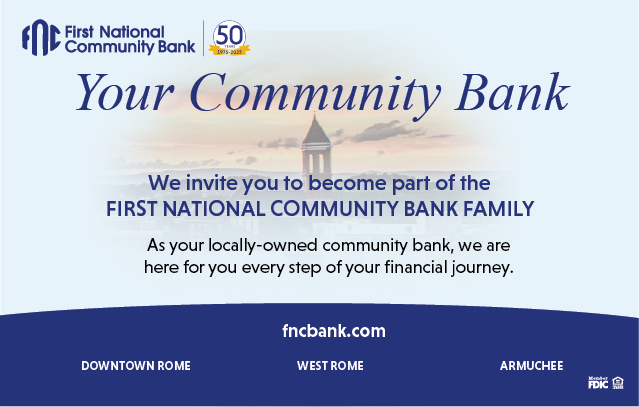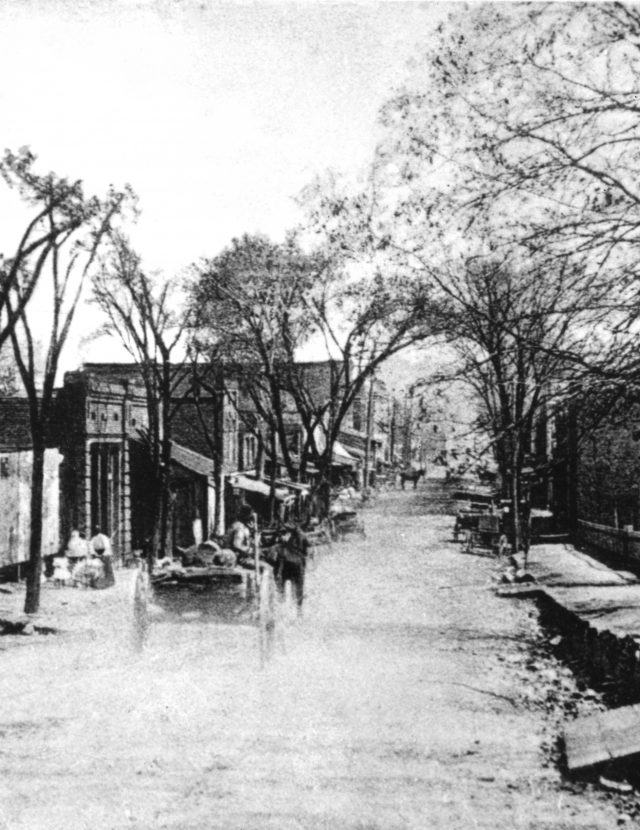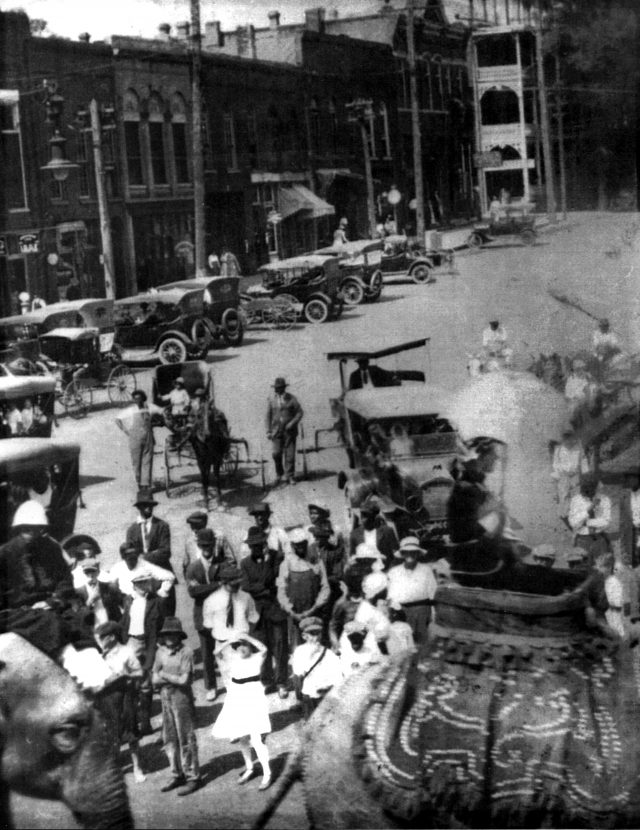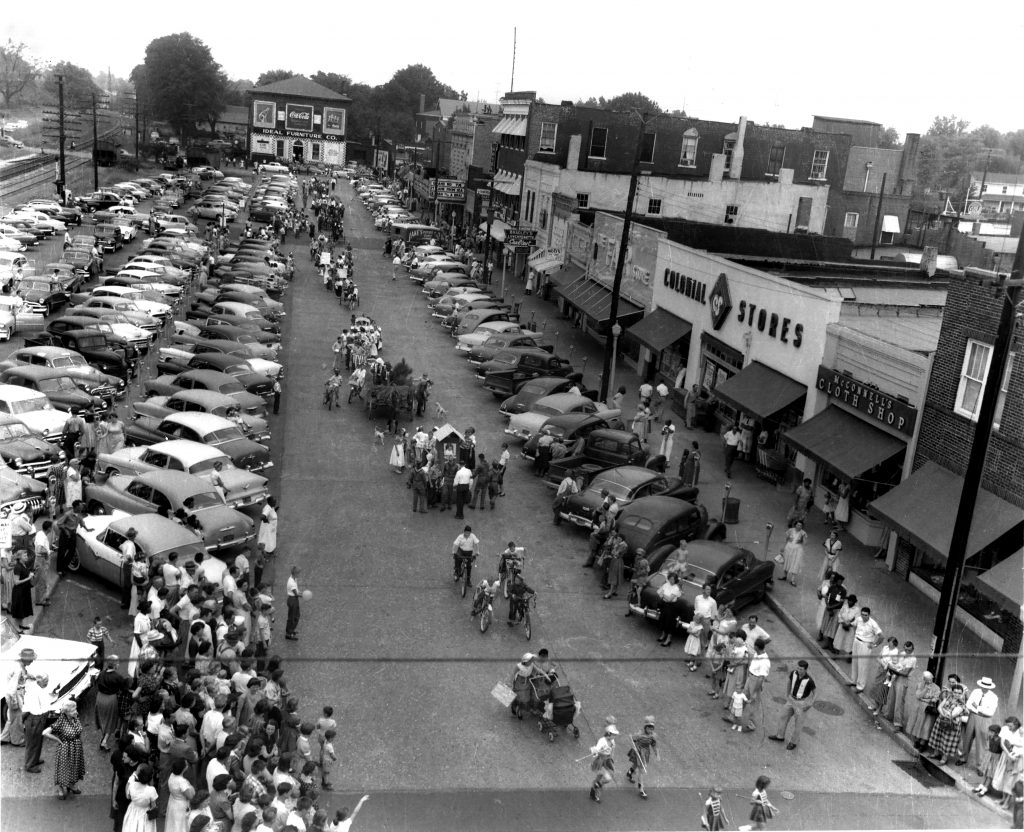
People exploring downtown Cartersville, Georgia, might notice a large, red wall mural on the side of Young Brothers Pharmacy. The mural, painted in 1894, faces the train tracks and advertises Georgia’s favorite fizzy drink: Coca-Cola. Looking closer, explorers might notice a plaque naming it the first painted Coca-Cola advertisement of its kind. That mural, and that pharmacy, are just a few of the incredible stories to come out of historic downtown Cartersville.
With the help of private citizens and local businesses, the Cartersville Downtown Development Authority is working to restore and maintain the city’s downtown district so that it may continue to serve the people of Cartersville for many years to come.
Downtown Development Director Lillie Read is fascinated by Cartersville’s history, especially as it appears in Sanborn maps. These maps, published by the Sanborn Map Company in the 19th and 20th centuries, were used for insurance assessment and show the functions of each building in town. Through these maps, one can see how downtown Cartersville has changed over the years, despite the fact that many of the structures themselves remain more or less the same.
According to Read, the building that now houses the Bartow History Museum was first built as a courthouse after the Civil War, but it has served as a roller-skating rink, a furniture store, and more since that time. Even City Hall once shared space with another staple of the community. “At one point it was really interesting for me to note that City Hall also shared space with the town saloon,” Read says.
Others, like the pharmacy adorned with the Coca-Cola mural, have not changed function in over a century. “[The Young Brothers Pharmacy] building has been a pharmacy in the Sanborn maps ever since we have a map,” Read explains. “Our earliest map is in 1885.”
In fact, Asa Candler, founder and developer of The Coca-Cola Company, did his pharmacy internship at Young Brothers Pharmacy. Read guesses that this might be the reason for Cartersville’s own piece of Coke history.
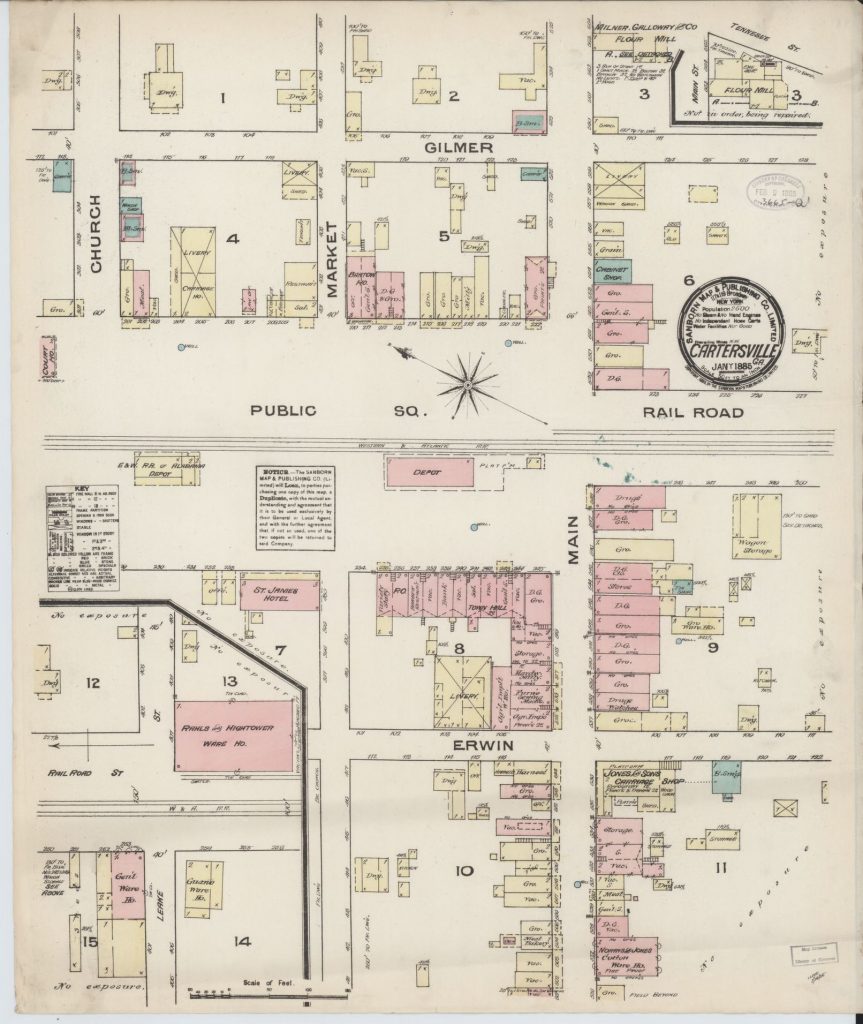
Downtown Development
A city’s downtown district has long been considered the heart of the community: a place where business happens, locals meet and travelers get a sense of the town they’re passing through. However, as the decades have passed, many cities across the nation have begun to lose their traditional downtown areas. In the 1980s, the state of Georgia decided to do something in order to revitalize its dying downtowns.
This was the beginning of Downtown Development Authorities and the Main Street Program. “It allowed cities to do special work to try to save these historic downtowns,” Read explains. “If a building is too bad for the average person to want to buy and redevelop, it gives the city an option to reinvest, buy, sell, rent, redevelop through a different body. Cities can’t do that directly; we as the DDA have a separate director and a separate board of people governing those actions if the city wants to use us in that way.”
The Cartersville DDA focuses on four key areas: promotion, outreach, design and economic development. Through social media promotion, brochures, outreach, events and assistance with grant applications, the DDA works to promote and maintain the businesses that are making these historic buildings their homes.
“You can’t preserve buildings that can’t be useful,” Read says. “If they don’t have an economic function, especially in a downtown district, they’re not going to stick around. Our purpose is to support all of the individuals doing this work, and to support the businesses that are filling these buildings, and to try to give guidance, assistance, technical direction.”
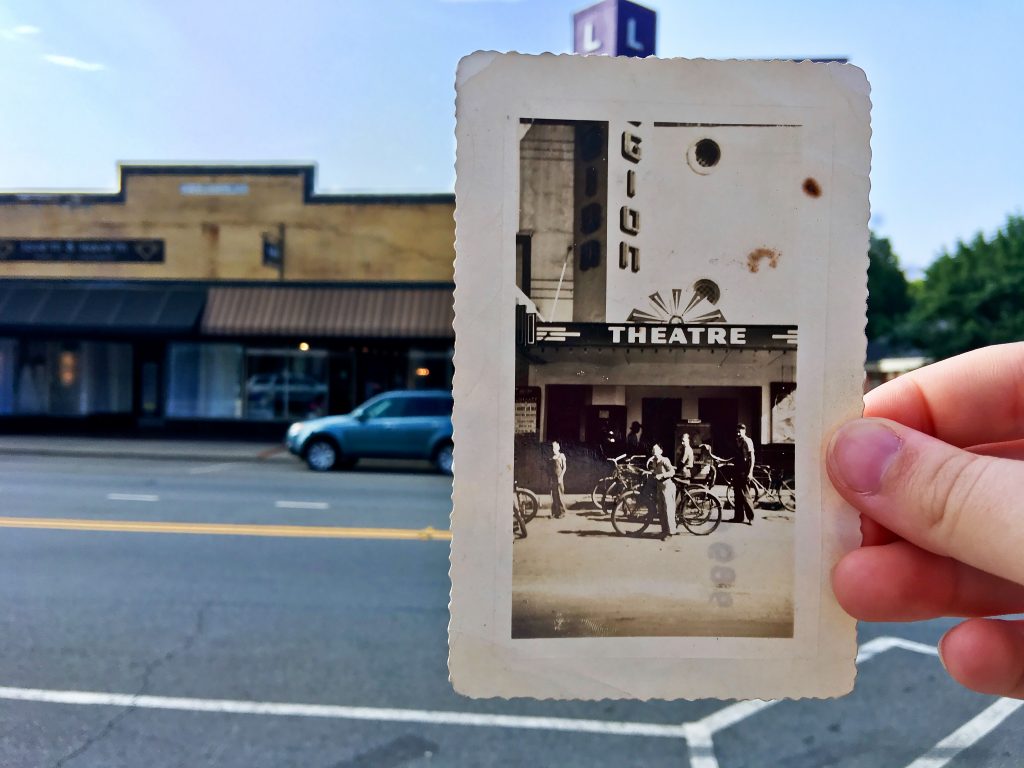
Heart and Hard Work
The work of preserving and restoring many of Cartersville’s historic downtown buildings is in the hands of private citizens and business owners. John Lewis, owner of John Lewis Property Management in Cartersville, specializes in historic restorations — and he’s been restoring downtown Cartersville for several decades.
“John is on the private side of historic preservation; he can buy a building, put his money and his heart into it, and then revitalize the community step-by-step,” Read says. “He really did lay the foundation for that. I think that his efforts, and the efforts of others in those early days of downtown redevelopment, really helped the city understand that’s a crucial thing that they need to get involved in. When he got to these buildings 20 or 30 ago, I think he was right on time.”
Lewis bought his first building in 1986 and has been managing properties ever since. He and his team have restored several buildings under the bridge downtown and others throughout Cartersville. He says that he’s learned a lot on the job, especially when it comes to restoration. “What I’ve learned is when you get ready to restore one of these buildings, you put a dumpster out front or out back and you put all the new rehab that people have done for the last 50 years in the dumpster and go back to the original building,” Lewis says. “You take the carpets out, you take the drop ceilings and the fluorescent lights out, you take all the modern accoutrements out and try to go back to the original structure and update that. It just makes all the difference.”
The oldest building Lewis owns was built in 1855 and served as a post office in the Civil War. President Benjamin Harrison, stationed in the area during the Civil War, had his office in that building. Now, over 150 years later, it serves as the home of Strands Salon. Another of Lewis’ buildings has a small outbuilding in the yard that once served as slave quarters. Lewis’s work has been instrumental in helping Cartersville’s downtown historic district earn a place on the National Register of Historic Places.
One of the latest new developments has been the introduction of loft apartments downtown. Lewis was a key player in this process as well. “We’ve done pretty well with what we’ve got,” he says. “Our whole downtown is full now; we’ve got a waiting list for retail and lofts.
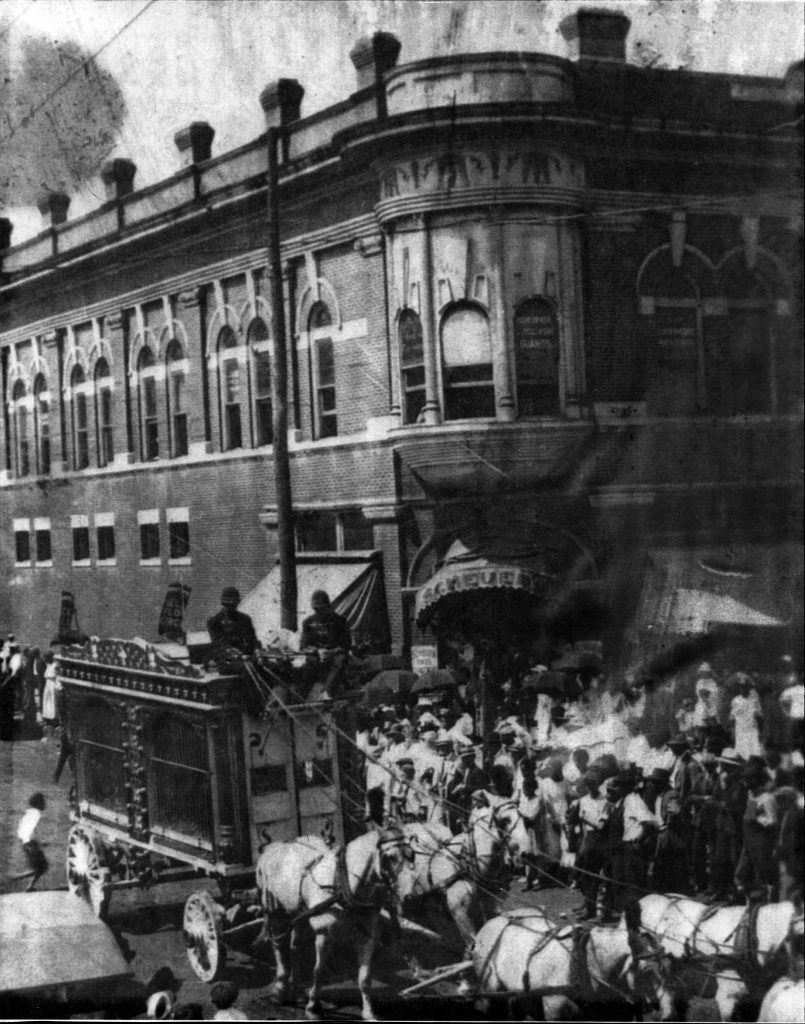
Moving Forward
Two of these residential lofts take up the top floor of 101 W Main Street. Justin Owen, owner of Owen Security, oversaw the renovation of this building, and his business now occupies the office space on the building’s main level, which also features an event space. The restoration of the building took Owen and his team two years, as the building had previously been abandoned for nearly a decade due to a fire.
Owen took on the project because of his appreciation for historic buildings and the downtown community. “I have an affinity for historic buildings,” he says. “I tend to get a bit of nostalgia when I walk into a historic building and think about the stories and the paths that people have taken to get through there. I thought it would be really neat to rehab that facility and allow the community to enjoy it again.”
Since opening, the two lofts have been used as short-term rentals. “A lot of people are appreciating that they get to come stay for a few nights in downtown Cartersville and enjoy the restaurants, and the shopping and the museums,” Owen says. “I think it’s a popular place to stay.” After finishing the Main Street project, Owen says he promised himself that he wouldn’t take on another restoration project anytime soon, but his love for downtown Cartersville meant that his promise didn’t last long.
He has another similar project in the works and hopes to see downtown continue to thrive. “A thriving downtown is the key to a thriving community,” he says. “I think these towns like Cartersville, there’s a lot of history and character, especially in the downtown buildings. There’s so much history in these buildings, they just deserve to be preserved.”
The Downtown Development Authority is also looking to the future while still focusing on the past. In recent years, they have pushed to discover and raise awareness of more diverse history in the area. “Since downtown is supposed to be the heart of the community, one of the things that I feel like is important in our work moving forward is making sure that all of the community feels safe and included and represented,” Read says.
Through work on the Bartow County African American Heritage Trail, Read says, “We uncovered an incredible swath of history as far as Black entrepreneurship and retail development; we had two different Black business districts before desegregation. With the area having the history it did, it was interesting to widen the perspective of what happened downtown.”



